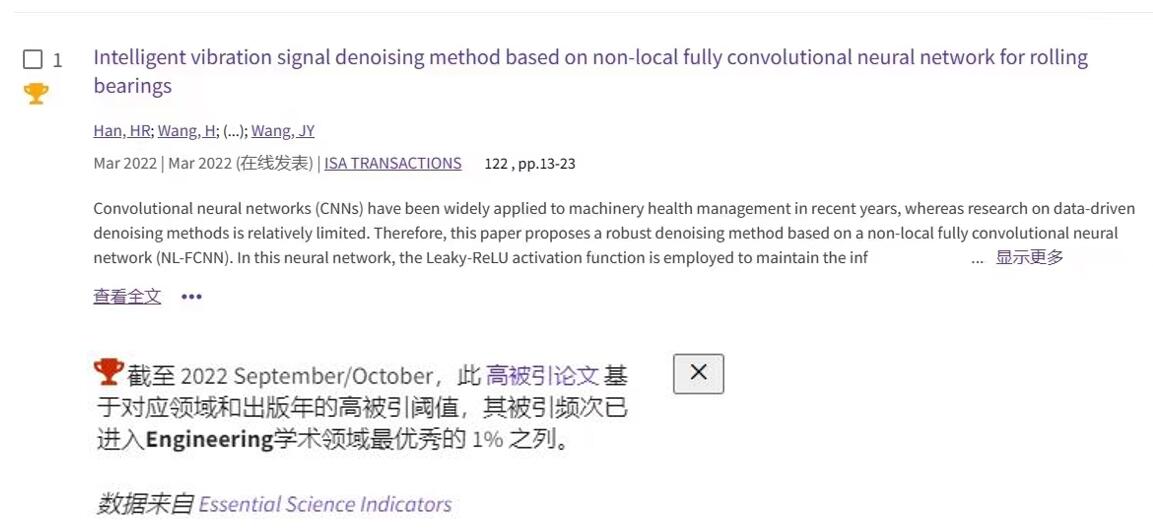Academic Outcome of Cohort 2017 Undergraduate of Glasgow College Selected as ESI Highly Cited Paper
Recently, the academic paper titled "Intelligent Vibration Signal Denoising Method Based on Non-Local Fully Convolutional Neural Network for Rolling Bearings" written by Han Haoran, a Cohort 2017 undergraduate of Glasgow College, under the guidance of Associate Professor Liu Zhiliang from the School of Mechanical and Electrical Engineering, was selected as the latest highly cited paper of ESI. The paper was accepted by ISA Transactions (Impact Factor 5.911, CAS Region II Top Journal) in 2021 and officially published in March 2022. Up to now, the research achievement has received widespread attention from domestic and foreign scholars, including IEEE Fellow, and its citation frequency has entered the top 1% of the Engineering academic field.

Figure 1. Han Haoran's Paper Selected as ESI Highly Cited Paper
The prediction and health management of major equipment have always been a hot topic for academic research, such as fault diagnosis and life expectancy prediction. The ubiquitous noise makes it difficult for prediction and health management technologies to play a role in practical industrial scenarios. Noise reduction is one of the effective ways to solve this problem. Currently, signal processing-based denoising techniques represented by Fourier transform have many limitations, while the rapid development of deep learning provides a new way for denoising. In this emerging research field, the deep learning-based rolling bearing signal denoising technology has not been fully researched, and there are many difficult problems that need to be addressed urgently.

Figure 2. Intelligent Vibration Signal Denoising Method Based on Non-Local Fully Convolutional Neural Network for Rolling Bearings

Figure 3. Non-Local Module Process Diagram
Against this background, Han Haoran and others first introduced deep learning methods into the field of rolling bearing vibration signal denoising, proposed a denoising model based on fully convolutional neural networks, and introduced technologies such as wide convolutional kernel and non-local module based on the strong temporal correlation of vibration signals to achieve intelligent denoising of rolling bearing vibration signals based on data-driven technology. The deep learning denoising method proposed in this paper has significantly better performance than the traditional one and shows good robustness in unknown noise environments. It can effectively improve the performance of subsequent fault diagnosis, which has important academic value and application prospects.

Figure 4. Visualization of Rolling Bearing Vibration Signal Denoising Effect
Han Haoran started conducting scientific research under the guidance of Associate Professor Liu Zhiliang in his sophomore year, mainly focusing on the application of deep learning in signal processing and fault diagnosis, on the basis of which he completed his bachelor's thesis. Currently, Han Haoran is pursuing his master's degree in the School of Information and Communication Engineering at UESTC.
Translated by Fan Leyan, Hu Can, Su Yanlei
Proofread by Jennifer, Chen Shulin







